
ACADEMICS
The Academy for Individual Excellence is a Christian school serving families with children in preschool through 12th grade. We are accredited by the Kentucky Non-Public Schools Commission (KyNPSC) and certified by the Kentucky Department of Education (KDE). John Savage, the school’s founder and Director, is a minister of the Church of Christ. He purposefully structured AIE to honor Godly principles, value family and demonstrate respect for the lessons of service and love found in the life of Christ.
We believe that all young people want to engage and achieve—to do and to succeed. We have created an environment that nurtures each child’s natural curiosity and teaches them to work in the classroom and on their own at home to reach their individual level of excellence through mastery of work ethic, engagement, accountability, and compassion. Our teachers present strong academic content that engages students in the classroom; work with the students to establish individual plans for effective outside work; and builds the relationships necessary for each child to be evaluated according to their ability.

Elementary Structure
Kindergarten - 8th Grade


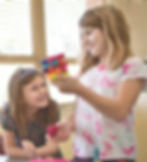
Describe your image


The elementary program, grades 1-8, consists of three separate “families," each designed to foster a secure environment for students by mimicking the structure of a small community school.
The physical layout of our building allows each family (1-8) to have its own separate wing.
Students pass from first through eighth grade in the same family. This structure allows each teacher to know and interact with students on a more personal basis. It also allows for students to be better acquainted with one another.
In addition, the grades are combined: first and second are together, third and fourth are together, fifth and sixth are together, and seventh and eighth are together.
This enables the teacher to have the children for two years, instead of one, which enhances the teacher’s relationship with the students, and with their parents.
Sponge Rooms
Each elementary school family has a “sponge” room, which contains a variety of learning materials and resources for hands-on, inquiry-based activities. These rooms are open to the students, in most cases, twice a day so they can explore science, social studies, reading, math and other subjects.


The sponge room has three instructors and may hold up to 32 students at one time. Students come to the sponge room from their classrooms when their classroom teacher needs to teach a particular lesson or concept to a specific group or be in a small setting.
For example, the third and fourth-grade teacher may send the third-grade students to use the sponge room while instructing the fourth grade in a particular math or reading skill in the regular classroom. This allows for a better ratio for teacher and student during times of academic instruction while giving students in the sponge room the opportunity to receive guided supervision in hands-on learning.
Because time in the sponge room is not restricted to students of specific ages at specific times, the mix of students working in the room at any time may range from first to eighth grades, which models the more natural range of age interaction among children in a family.
In the Sponge Room, children benefit from helping one another—from giving and receiving support across a wide range of ages. They can experience a healthy spirit of developmental competition and can grow by exploring and taking risks. This is empowering for children who are academically strong as well as for those who experience learning challenges.
Working in the Sponge Room encourages independent learning. It helps students see their learning as a product of skill development and experiences gained over time; and it prepares them to succeed in the unique contract-based grading system we use in our High School.

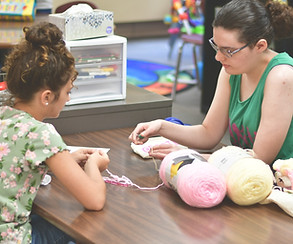
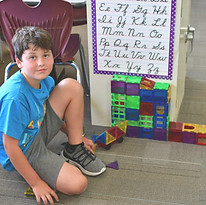

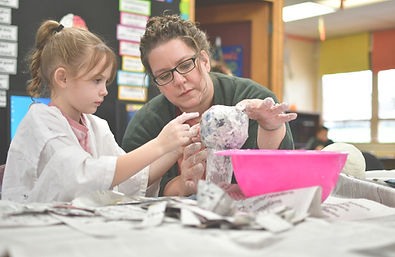
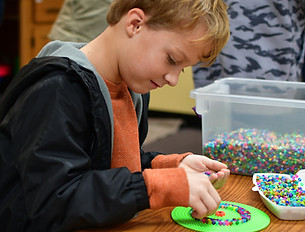




Rote
Rote learning is integral to AIE’s academic program and is an important key to our success with the wide variety of students we serve.
The use of rote memorization helps students develop confidence in the classroom. It increases their focus on, and engagement in, class activities. For AIE students, Rote starts in Kindergarten and continues through their senior year of high school. By the time they graduate, AIE students have memorized and can recite the names of the US Presidents; The fifty US states and their capitals; The books of the Bible; the Periodic Table; the Taxonomy of Living Things; The Preamble to the US Constitution; the Gettysburg Address; and more!


At AIE, we use ROTE to stimulate the more advanced student to further exploration. For the student who needs repetition and finds it difficult to process new information, we use to Rote establish a foundation upon which more detailed information can be built.
High School Structure
9th-12th Grades





Our High School day comprises seven periods: six 50-minute subject area classes and a 45-minute Resource Advisory Period, or RAP. School begins at 8:30 a.m. and ends at 3:10 p.m.
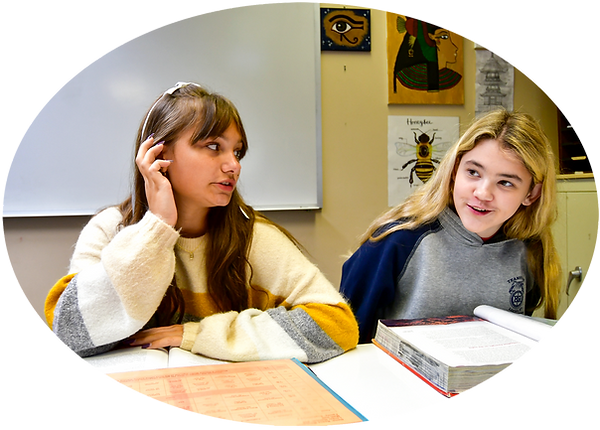
Students in each grade (9 through 12) are organized into two sections of 16 to 18 students, who remain together as they move from class to class and from year to year.
As they work together in their high school families to learn and grow, they develop trust in one another and their teachers and develop a strong sense of belonging.
Curriculum and Grading System
Contracting
Students in the AIE High School earn their quarterly grades through our unique contracting system. At the start of each quarter, each student consults with their parents and teachers to decide what grade they believe they can earn. When all parties agree, the student signs contracts with his or her teachers that clearly spell out what the student must accomplish to earn each grade.
Expectations spelled out in each contract include attendance, tests and quizzes, classroom behavior, engagement in class activities, and completion at home of one to three self-developed and self-directed projects.
The contract grading system dictates that students demonstrate work ethic and hold themselves accountable for the commitments they have made.
Projects
Projects are, essentially, “homework” that high school students assign themselves each quarter, in consultation with their families and their teachers. To earn an “A” in any class, the student must earn that grade on tests, quizzes and in-class assignments, of course, but they also must complete three ten-hour projects: a writing project, a reading project and a creative project. Creative projects give the student opportunities to learn new skills or practice skills they already have, or simply to dig more deeply into topics that interest them.






Curriculum
AIE complies with the Kentucky State Board of Education’s course requirements for high school graduation. Every student takes four years of mathematics, sciences, English and social studies.
Our size limits the number of electives we can offer. Students satisfy the state requirements for elective courses by taking art, music appreciation, computer, critical thinking, psychology and Dave Ramsey’s Financial Peace. All 9th and 10th grade students learn American Sign Language (ASL). In grades 11 and 12, all students learn Spanish.
Through the use of the contracting system and the scaffolding provided by the daily RAP, students who want to explore other subjects or go more deeply into those already offered may develop with their teachers courses of independent study tailored to their academic interests.
Resource Advisory Period (RAP), Rote, and Basics
RAP
The fourth period of each high school day is devoted to a supervised multi-age study time, called RAP (Resource Advisory Period), Students use this time to complete missed assignments, do extra class work or conduct contract-related research or study that requires resources available at school.
RAP encourages developmental competition and growth because it allows each student the opportunity to be exposed to the work habits, academic abilities and diverse interests of a variety of students at different levels and in different subjects. Students get a vision of what academic progress and personal achievement looks like in others and, as a result, are stimulated in their own individual journeys of learning and exploration without the stress of peer comparison and academic competition.
Rote
High school teachers use memorization and oral repetition of basic information in their content areas to engage each student. This method provides for students of varying abilities the opportunity to lay a foundation for a more developed acquisition of knowledge and understanding. Teachers also use it to focus and reorient students as they continue to learn and research.
Basics
Students begin most classes each day with written engagement in and manipulation of core knowledge by completing Basics Sheets. These one-page exercises are designed to engage students, promote good work habits, build confidence and create focus while introducing vocabulary and content.
Study Hall
Study Hall
When a student has missed a contract deadline or failed to complete a class assignment, their teacher will arrange with parents for the student to stay after school and do the work in a structured program where High School staff will help them solve whatever problem may have prevented them from meeting that expectation. This might be a lack of understanding of the material, an issue with time management, lack of appropriate motivation, bad habits, or forgetfulness. Initially, the reason will not be nearly as important as that the work will be done. The reason will become apparent over time as staff work with the student, and they will develop a plan to remedy the situation.
Weekly Assemblies
The High School student body meets every Monday morning for announcements, updates, and a message of guidance and encouragement for the week from Mr. Savage. Teachers attend these meetings alongside the students so they can revisit in classroom discussions the ideas offered.
On Friday afternoons High School students and teachers again meet in the gym for activities designed to engage all students, build their confidence, develop trust and forge a spirit of togetherness.